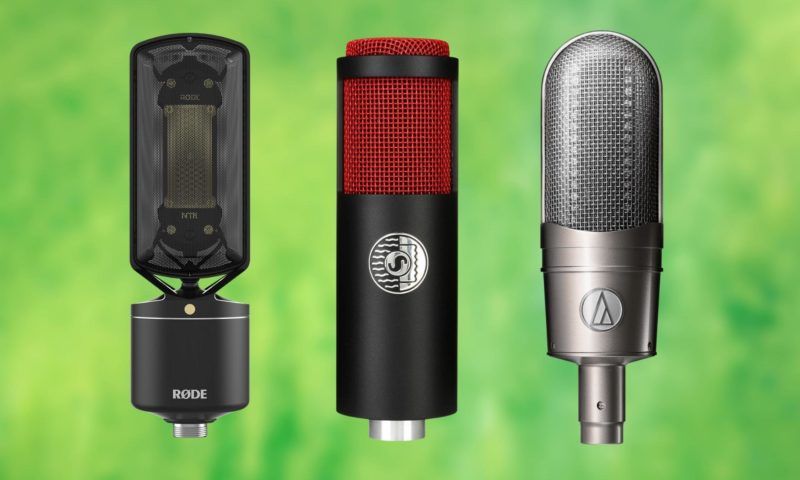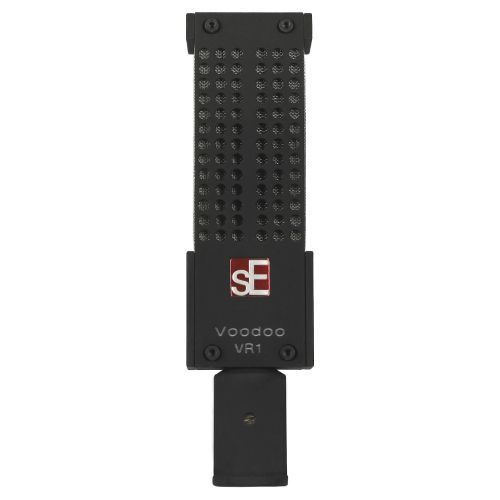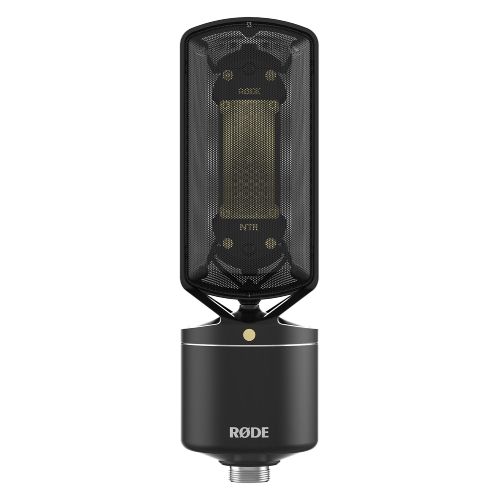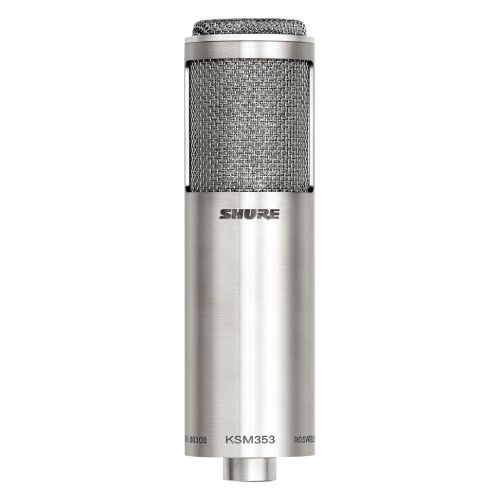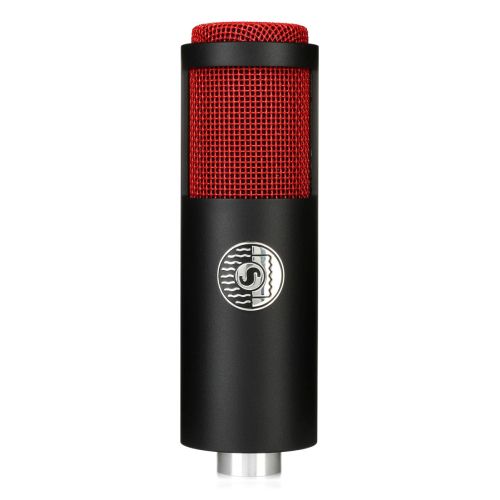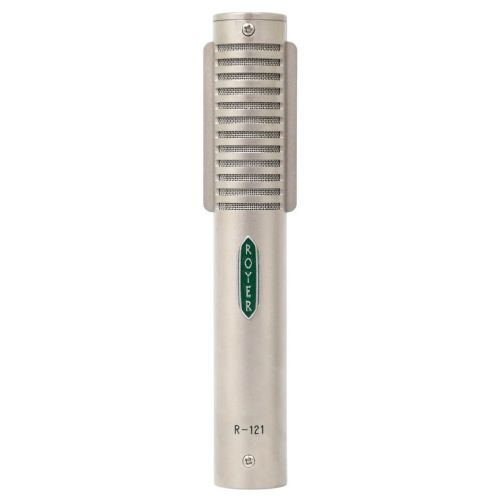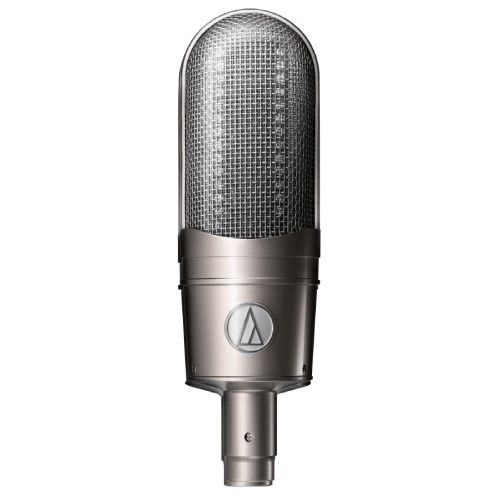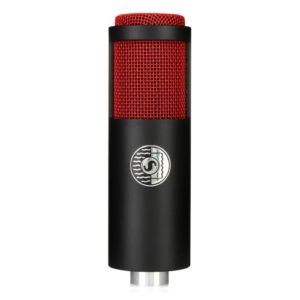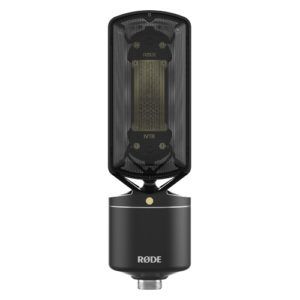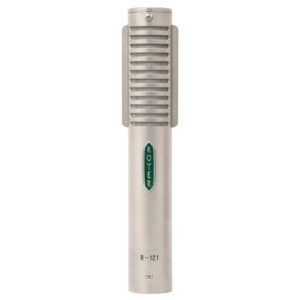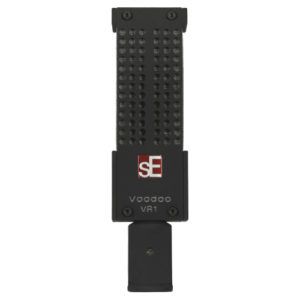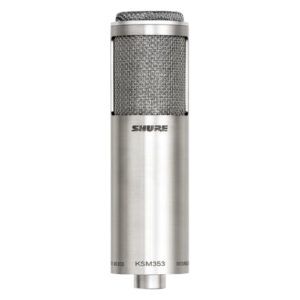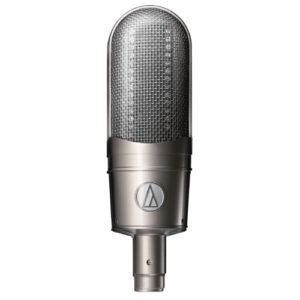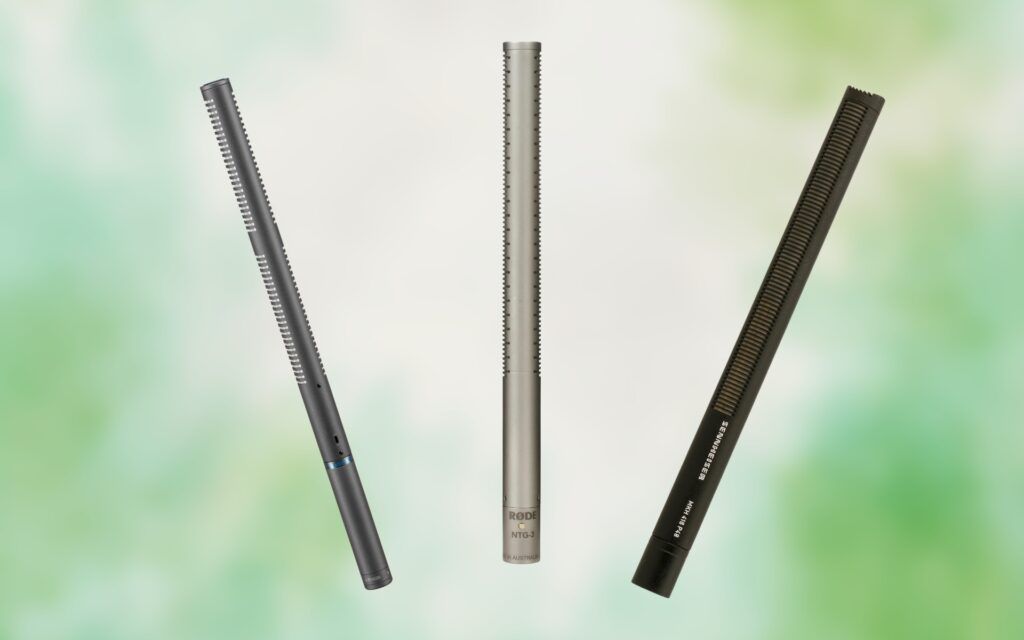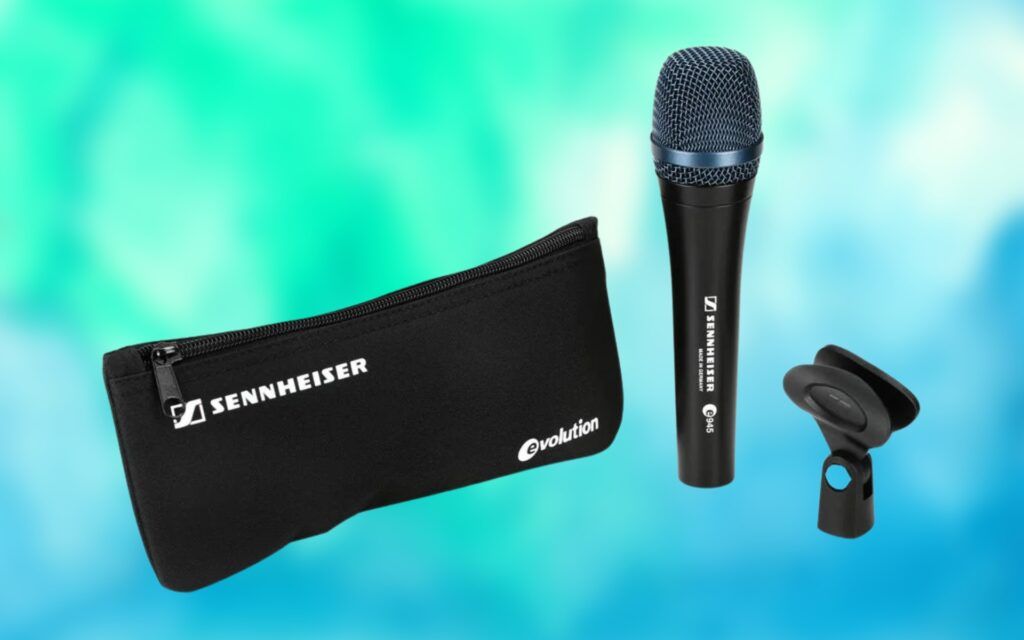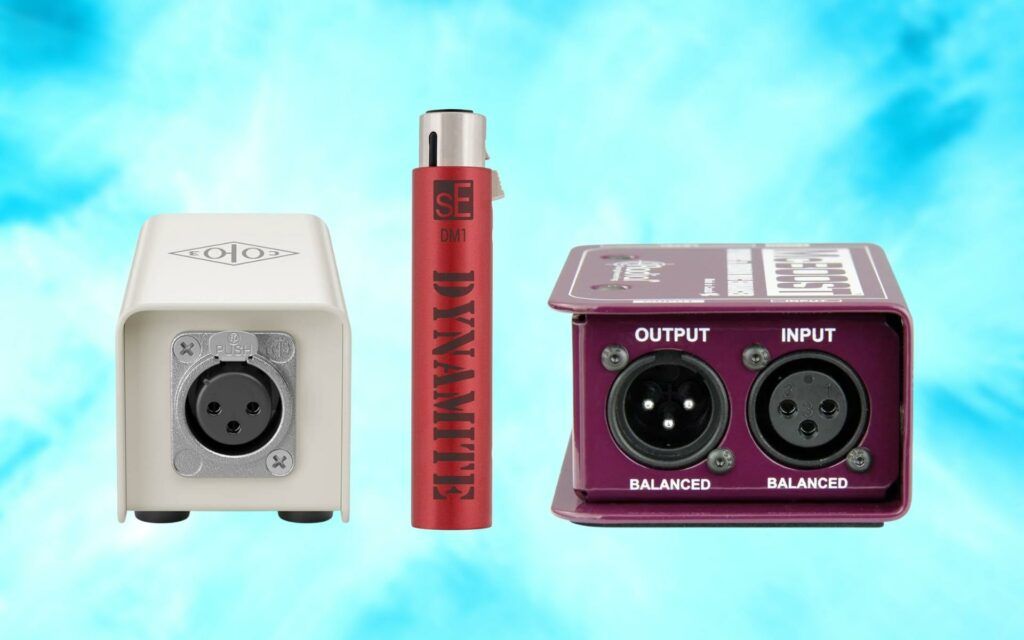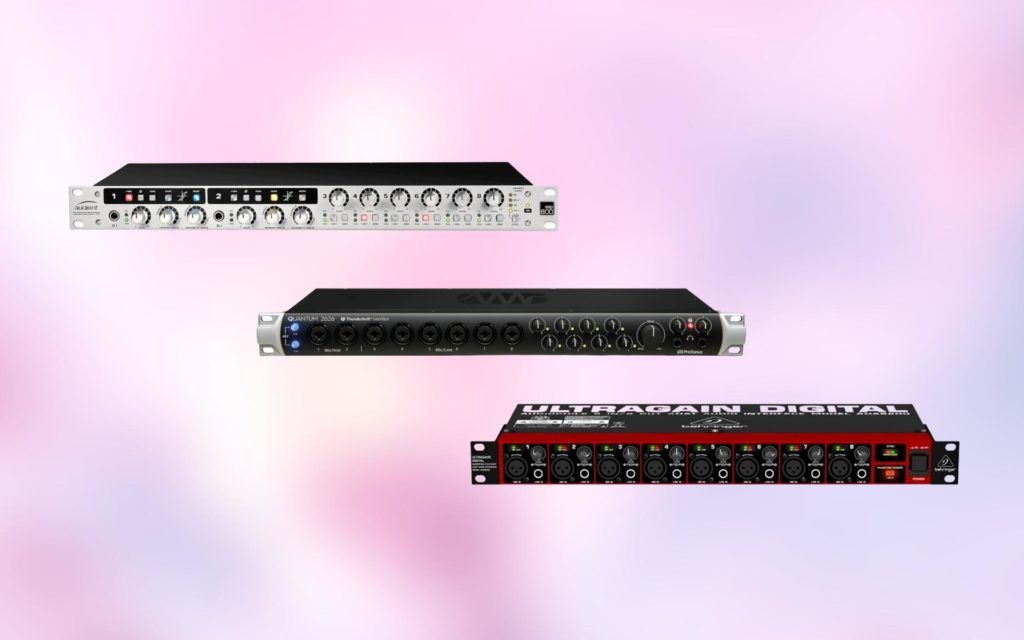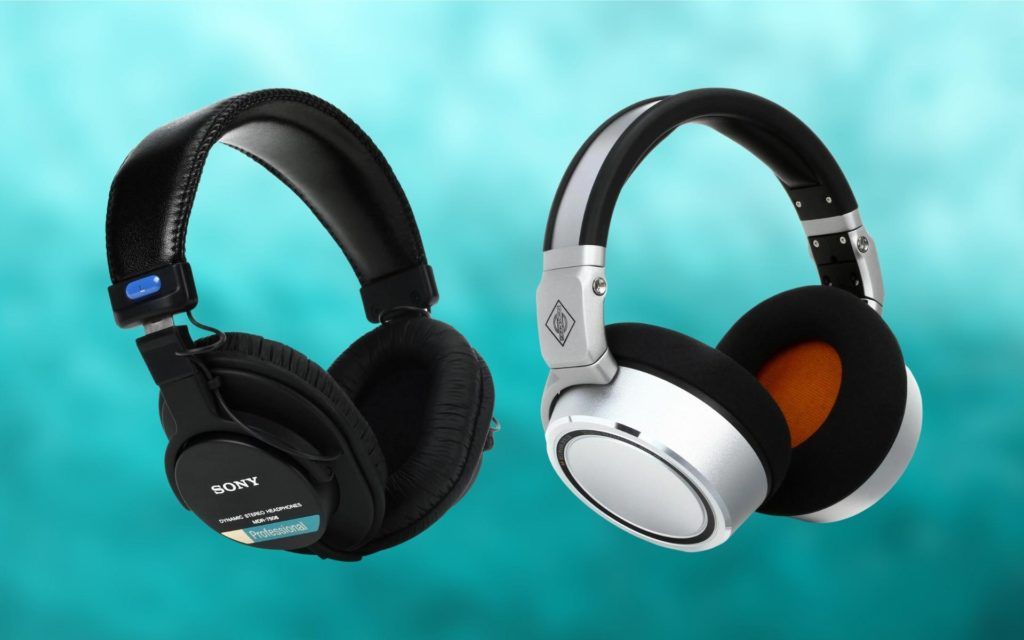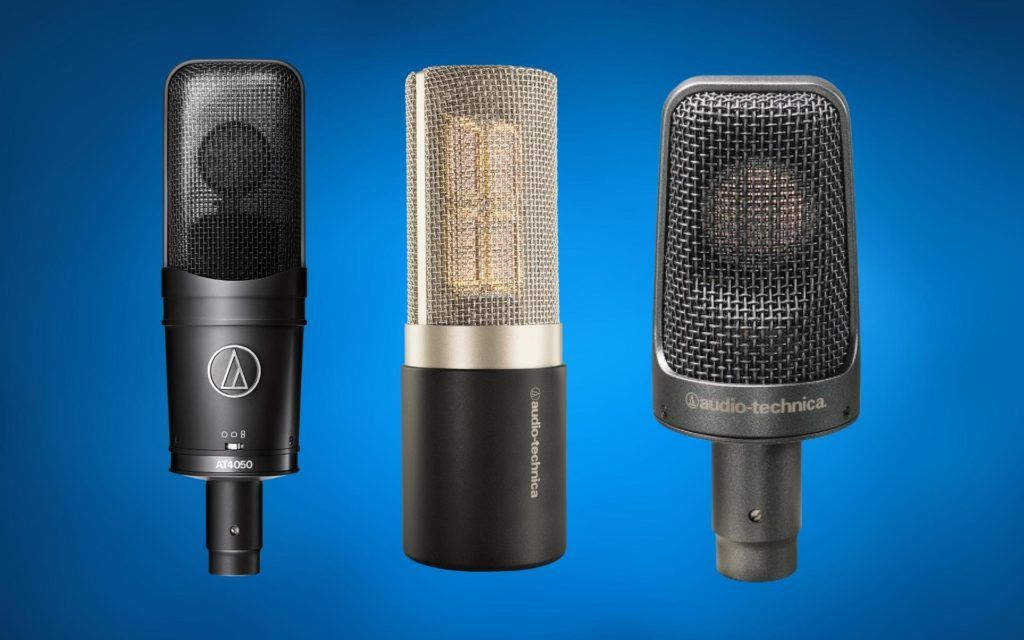We review products independently and our recommendations are genuine. If you purchase through links on our site, we may earn an affiliate commission. Learn More
Ribbon mics offer a distinctive sound that differs from other microphones. They have distinctive warm qualities and offer a nice contrast from condenser and dynamic mics.
Ribbon microphones were once a staple of recording studios around the world, but gradually over time, dynamic and condenser mics overtook them. Despite this, ribbon mics are a brilliant addition to any recording setup.
The distinctive warmth of a ribbon microphone cannot be replicated, leading to a resurgence in their popularity. Manufacturers have used vintage designs with modern updates to create a new generation of excellent ribbon mics for recording.
As is the case with all microphones, many variations of ribbon mics are available. Designs can be altered and tweaked to create different recording sounds and capabilities.
In this guide, you’ll find the best ribbon microphones available for recording in a home or professional studio setup.
In a Rush Roundup
How We Tested
We made sure to test every important aspect to identify the best ribbon microphones for studio recordings. Firstly, we analyzed the quality of the components, including the ribbon design and the housing, to ensure that the mics would be robust enough for studio use.
We then moved on to testing the sound of the ribbon microphones, particularly their warmth and accuracy. Finally, we looked in detail at the microphone’s ability to handle high volumes and fast transients when recording a range of sound sources. The results are explained in detail in our reviews below.
Ribbon Mics for Studio Recordings Reviews
Shure KSM313/NE Dual-voice Ribbon Microphone
Shure KSM313/NE Dual-voice Ribbon Microphone Review
Shure is best known for its excellent selection of condenser and dynamic microphones, but the company also manufactures some fantastic ribbon mics like the KSM313. This microphone is ideal for recording vocals of all styles and tones.
Compared to most other ribbon mics, the KSM313 sounds brighter. This is a result of the ribbon being made by a material known as Rowellitle, which boasts superior strength to the commonly used foil material.
This unique design also gives the KSM313 a better sensitivity to the dynamics of vocal recordings. Whether you’re recording belted-out vocals or less intense backing harmonies, this microphone can do both.
The SKM313 is not just a vocal mic – it also records guitars and drums very capably. If you’re looking for a mic that can perform multiple roles in the recording studio, this Shure ribbon device is worth considering.
Another exciting feature is that this microphone records very differently depending on the side of the capsule that you direct toward the sound source. The front side sounds bright, while the rear sounds darker.
Features:
- Figure 8 polar pattern
- Max SPL of 146dB
- 30Hz-15kHz frequency response
Pros
- Includes a brighter and darker voice
- Excellent at capturing sharp transients
- Classic warm ribbon sound
Cons
- Not ideal for recording treble-heavy sounds
Rode NTR Active Ribbon Microphone
Rode NTR Active Ribbon Microphone Review
Rode manufactures some excellent ribbon microphones, and the NTR is one of their most popular offerings. This mic is highly detailed, thanks to the quality of the components used to construct it.
The 1.8-micron ribbon central to the microphone’s performance is shock-mounted, which helps minimize the risk of handling noise. Also, this is highly sensitive, making it ideal for capturing the slight nuances of an acoustic guitar or vocal take.
The transformer Rode has installed also integral to how the mic records audio. This custom-designed component helps to highlight the treble frequencies that many ribbon mics lack.
One of the qualities that Rode is renowned for is the durability of its microphones, and the NTR lives up to this reputation. With a heavy-duty chassis protecting the vital inner components, this mic will last for many years even if it’s used frequently.
The frequency response of the NTR is surprisingly extensive for a ribbon mic. While most of these mics are capped at around 16kHz, the NTR can capture anything between 20Hz-20kHz, making it an excellent choice for all types of instruments.
The NTR can handle SPLs up to 130dB, so you don’t need to worry about distortion occurring if you are recording a loud vocalist or an amplified guitar.
Features:
- Frequency response of 20Hz-20kHz
- 130dB max SPL handling
- Figure 8 polar pattern
Pros
- Well balanced recordings
- Open sound with clear midrange
- Great for acoustic and amplified recordings
Cons
- Not ideal for high-pitched instruments or vocals
Royer R-121 Studio Ribbon Microphone
Royer R-121 Studio Ribbon Microphone Review
Royer is one of the industry’s leading manufacturers of ribbon microphones. Renowned for its attention to detail and blend of excellent components, the company was recently awarded a Grammy to recognize its excellence and consistency in recent years.
The R-121 is more compact than most ribbon microphones, which makes it easier to position in the studio. It’s also incredibly versatile and can be used to record everything from woodwind instruments to drums.
When you analyze the design of this microphone closely, you can see how much thought and time Royer puts into creating its ribbon mics. This is one of the main reasons the brand is so highly considered by industry professionals.
A balanced flat frequency response ensures that the microphone won’t produce any weak spots regardless of the instrument or vocal style you use to record.
With its maximum SPL handling of 135dB, this microphone defies the stereotype that ribbon mics can’t handle loud volumes. It can be placed in front of a guitar amp that is cranked up without distorting or suffering a loss of sound quality.
Features:
- 30Hz-15kHz frequency response
- 135dB max SPL
- Replaceable ribbon transducer
Pros
- Great for all vocal recordings
- Prominent midrange
- Elegant vintage appearance
Cons
- No active electronics
sE Electronics Voodoo VR1 Passive Ribbon Microphone
sE Electronics Voodoo VR1 Passive Ribbon Microphone Review
sE Electronics produces a range of affordable microphones that perform more like high-end devices. The Voodoo series is perhaps their best mid-range offering, as is evidenced by this ribbon mic.
The VR1 is a passive ribbon microphone that has a comprehensive frequency response. This makes it suitable for recording everything from drums to guitars to vocals.
Moreover, it can handle impressively high volumes for a ribbon mic. Anything up to 135dB can be picked up by the microphone capsule without the risk of it clipping or distorting.
This mic also has phantom power protection, which prevents it from being damaged if you accidentally leave the +48v boost on your audio interface after using a condenser microphone. Many ribbon mics have been ruined by this, so sE Electronics are wise to combat it.
One of the areas where the VR1 excels is the recording of acoustic instruments. It hones in on the detailed transients of an acoustic guitar and sounds great whether you use fingerstyle techniques or strum with a plectrum.
Its ability to handle high volumes makes this mic suitable for being used as a room microphone for acoustic drum kit recordings, too.
Features
- 20Hz-18kHZ frequency response
- 135dB max SPL handling
- Figure-8 polar pattern
Pros
- Affordable and reliable
- Records with a warm, vintage tone
- Great for capturing two sound sources simultaneously
Cons
- Bass lacks some definition
Shure KSM353/ED Ribbon Microphone
Shure KSM353/ED Ribbon Microphone Review
When Shure designed the KSM353, they tapped into their countless decades of knowledge and wisdom from producing microphones. This ribbon mic is expertly designed – with every aspect intentionally created to benefit the whole performance.
Hand-crafted in Shure’s USA factory, the KSM353/ED can handle up to 146dB maximum SPL. This makes it one of the best ribbon mics for handling higher volume instruments and sounds in the studio.
The microphone also has a wide frequency range so that you can benefit from its detailed recordings of various instruments and vocal styles. This mic will perform flawlessly regardless of the frequency bands your recordings include.
Shure has chosen some of the best possible components when constructing this mic, including a double-shield transformer to prevent magnetically and RF interference from tarnishing your recordings.
Then there’s the custom-designed ribbon motor, which keeps the bass frequencies in check without compromising the volume of any other frequency bands in your recordings.
The materials used to construct the chassis include aluminum, steel, silver, and gold, which combine to create a highly robust device that has the potential to last for decades.
Features:
- 30Hz-15kHz frequency response
- Figure-8 polar pattern
- 146dB max SPL handling
Pros
- Excellent off-axis rejection
- Resilient ribbon design
- Effortlessly records fast transients
Cons
- Slightly sensitive to upper-midrange frequencies
Audio-Technica AT4080 Active Ribbon Microphone
Audio-Technica AT4080 Active Ribbon Microphone Review
Audio Technica has focused on two key aspects when designing the AT4080 ribbon microphone. Firstly, they’ve taken measures to enhance the durability of the microphone, and secondly, they’ve ensured its sound quality.
Using the MicroLinear ribbon imprint, a technology patented by Audio-Technical, the brand has formed a protective layer over the two ribbons. This prevents them from distorting or being overextended, thus increasing longevity.
This ribbon microphone boasts a high SPL handling capability, which means you can place it in a live drum room, and it will be able to handle the volume of the snare, kick, and cymbals.
It’s also adept at capturing vocals, thanks to the microphone’s sensitivity and comprehensive frequency response. Recordings sound natural and open, without the common high-end weaknesses of some ribbon microphones.
Another exciting aspect of this microphone is the substantial output transformer, which combines with a unique baffle system to improve the tightness of low-end frequencies and maximize the dynamic recording range.
Audio-Technica has also employed N50 neodymium magnets. These magnets are renowned for their power, and they’re used to increase the overall output level of the microphone.
Features
- Max SPL handling 150dB
- Figure-8 polar pattern
- MicroLinear Dual Ribbon
Pros
- Classic vintage sound
- Handcrafted with stunning detail and precision
- Robust ribbon design
Cons
- May be prone to noise issues due to active design
Studio Ribbon Mics Buyer's Guide
Ribbon microphones have been used for many decades in professional recording studios, and now they are also accessible to musicians and audio engineers who are creating a recording setup at home.
The technology behind ribbon mics hasn’t changed much since the days of analog recordings. However, manufacturers have figured out ways to make these mics more reliable and robust.
Most people want to use ribbon mics because of the warm, vintage sound they record vocals and other instruments with.
The distinctive tone provides a nice contrast from the modern condensers and dynamic microphones.
There are many things that you need to think about when choosing between the various ribbon microphones available.
If you’re still struggling to decide which specific mic you need, the information in the following sections should provide the answers you’re looking for.
Things to Consider When Buying Ribbon Mics
Frequency response
Ribbon microphones commonly have a less extensive frequency response than their condenser equivalents, but some manufacturers widen the response to make their mics more versatile.
Ribbon design
Ribbons are measured in microns, and there are several different materials that can be used to make them and protect them.
Physical attributes
Indeed, the way that a ribbon microphone sounds is its most important attribute. However, its build quality and physical design will determine how long the mic will last in your recording setup, particularly if you plan to use it heavily.
SPL handling
SPL handling signifies the maximum volume that a ribbon mic can handle before it distorts. You will need a ribbon mic with a high max SPL handling capability for loud instruments like drums and amplified guitars.
How To Choose the Best Ribbon Mic for Recording
Choosing a condenser or dynamic microphone for recording is, in my opinion, much easier than deciding on a ribbon mic. It’s a common misconception that ribbon mics all sound similar, with a warm, vintage tone that differs from the shaper sound of modern mics.
Although ribbon microphones do have a distinctive sound, the type of ribbon that is used, in combination with the other components and design features, can cause a lot of variation in the sound of its recordings.
Ribbon microphones burst onto the scene in the 1920s, and the way they work has remained relatively unchanged for the best part of the last century.
These microphones work by utilizing a thin metal strip placed within a strong magnetic field. The ribbon is used as the mic’s diaphragm and the transducer simultaneously.
Ribbon microphones are much easier to damage than condenser microphones due to their intricate, delicate design.
That’s why it’s important to look out for the specific methods that have been used to construct the microphone and the components that the manufacturer has used.
Active vs. Passive Ribbon Mics
When looking through our list of the best ribbon mics, you probably noticed that they come in two different varieties – active and passive. These two works are used to describe many devices in audio equipment, not just microphones.
The original ribbon microphones that were used until digital audio technology became popular were all passive, but in recent decades, manufacturers have created active versions.
Passive ribbon microphones have an authentic sound that is rooted in analog technology. Many purists prefer the warm, slightly unpredictable sound of analog gear compared to the clearer sound of modern digital devices.
The main advantage of passive ribbon microphones is that they have a very low output compared to other mic types. This means that they can handle louder sounds before clipping.
The low output of passive ribbon mics does mean that many of them need to be used with a preamp to boost the signal to an adequate level, which means investing more money.
Active ribbon microphones, on the other hand, don’t need to be used with a preamp as they are already at the idea level to record.
The difference is quite similar between digital and analog effects pedals. Some people prefer the reliability of digital technology, but others prefer the charm of vintage analog gear that can’t be replicated.
Using Your Ribbon Mic Effectively
Once you’ve selected a ribbon mic from our list, you need to take certain measures to ensure that it works properly and doesn’t get broken. These mics tend to be more fragile than other types, so using them responsibly is essential.
Using a ribbon microphone when phantom power is turned on can damage it, but most modern models are resistant to this damage. It’s still a good idea to always check that +48v phantom power is turned off before you plug your mic into the input.
It’s also a good idea to keep your ribbon microphone stored somewhere safe when it’s not being used so that it doesn’t get damaged by temperature fluctuations or get knocked over.
Studio Ribbon Mics FAQs
Do Ribbon Mics Need a Preamp?
Passive ribbon microphones often need to be paired with a preamp because they have a low output compared to other types of mics. Adding around +60dB of gain to a passive ribbon mic is usually an adequate amount.
Active ribbon mics are unlikely to need to be used with a preamp as they already have a high enough output. Preamps may still be used out of choice to alter the coloration of the microphone’s sound, but they aren’t necessary.
Are Ribbon Mics Fragile?
Ribbon microphones are often described as being fragile and easy to break. There is some truth to this, because the thin ribbon material essential to the microphone’s overall functioning can be broken if it is not cared for properly.
Ribbon mics aren’t necessarily more fragile than other varieties in terms of their housing and grille designs, but the thin ribbon does make them more susceptible to breaking, which is why it’s important to take care when using them.
What Polar Pattern do Ribbon Mics Have?
Ribbon microphones naturally have the figure-8 polar pattern, which pickups up equal sound from the front and rear of the capsule and some from both sides. This pattern is great for stereo recordings of more than one singer or musician.

